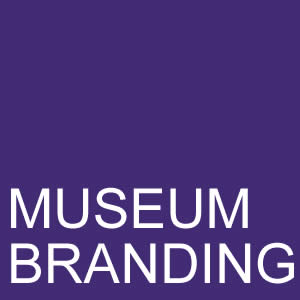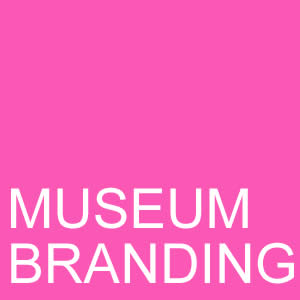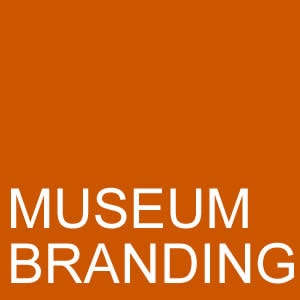Explore Museum Branding in 3 Comprehensive Steps
Introduction
In the past, museum marvels had their brands shaped by merely a few visual elements. These were fundamentals, such as the objects and the iconic buildings that were on display. This is currently being adapted to the digital world at breakneck speed. Think social media, museum blogs, collection tweets, and online carts filled with branded goodies. Visitors can now enjoy interactive exhibitions at the museum and browse fine art collections online in the comfort of their own homes.
Consequently, museum branding has evolved globally. Their distinct and vibrant fingerprint must be reflected in their cohesive brand while communicating a simple and clear message at first glance. In addition to the museum exhibition design services we deliver, we have also worked on numerous branding projects. In this blog article, we will share our three comprehensive methodology steps towards effective museum branding and then fine-tune and update these skeleton steps to suit an array of branding projects.
“museum branding has evolved globally.”
Step one

Understanding – Research – Discovery
- Understanding of context
- Compose marketing plan
- Research audience
- Conduct marketing research
- Evaluate marketing discoveries
To develop a successful marketing strategy for a museum, our team begins by conducting in-depth research into the museum’s context. This involves delving into the museum’s history, principles, and stories, as well as examining the museum’s current branding and messaging. By understanding the museum’s vision and guiding principles, we can develop a brand that accurately reflects its identity and resonates with its target audience. Once we have a clear understanding of the museum’s context and branding, we develop a comprehensive marketing research plan. This plan includes a range of research methods, such as surveys, focus groups, and user testing. We use these methods to gather data on the museum’s potential audiences, including their demographics, interests, and behaviours.
Using this data, we conduct local market research on a cross-section of potential audiences. This involves asking a range of constructive questions to understand better what motivates people to visit the museum, their level of awareness of the advertising and museum branding, and their overall responsiveness to the museum’s messaging. We also explore their local and cultural interests, website usability, museum services, social mindfulness, enjoyment factor, and recommendations.
By gathering this information, we can create a targeted and effective marketing strategy that resonates with the museum’s audience. This strategy may include a range of tactics, such as social media marketing, targeted advertising campaigns, and content marketing. By continually monitoring and refining our approach, we can ensure that the museum’s marketing efforts are always effectively reaching and engaging its target audience.
Furthermore, this information provides valuable insight into their vision and how the brand will satisfy or enhance their experiences. Incorporating the visualisation and values of the museum and heritage through a public voice This methodology enables us to give the brand trustworthy foundations along with building a long-term relationship with a brand they can relate to and benefit from.
Understanding the audience is a critical first step in maximising the brand’s potential for future marketing campaigns, cost-effective marketing strategies, increasing visitor numbers and awareness, and attracting new audiences. Once the brand research has been finalised, we propose having a review meeting in a team environment to relay all strategic documents and marketing discoveries.
Step two

Conceptual Brand – Strategy Development
- Brand strategy development
- Leverage and positioning of the brand
- Incorporating the campaign ability
- Audience assessments
- Conceptual brand delivery meeting
At the beginning of the conceptual museum branding stage, we start to profile a brand impression. Here, we put words and strategies into action, bolstered by research data. In simple terms, we start to refine a brand design message into a physical concept.
By implementing visual communications, we can lay the foundations for a strong, fresh, and memorable brand perspective. Moreover, we provide the catalyst to strengthen and heighten expectations and public loyalty, along with potential new markets. Following this, the aesthetic decisions and conceptual definitions are specified by the client’s branding brief. We are uniquely proficient at fusing the two industries into a polished and dynamic identity. This is the reason that we have over 25 years of international experience within the museum and branding sectors.
To that end, the leverage of the brand will tell an innovative “identity” story to audiences of all ages while carving an unforgettable vision that will stand the test of time.
A new positioning and strategic brand blueprint must be defined to inject a sense of personality into this conceptual vision while making it easy to digest. On top of this, we will create a genuine, vivacious buzz that people and communities will want to correlate with. It is our objective to present conceptual designs that present a strong brand identity yet maintain the flexibility to morph in line with new events and exhibitions. As a result, the museum branding strategy will communicate and deliver value based on its core offerings.
During this stage of the branding process, we begin to integrate a competitive thought process towards the brand’s campaigning ability. The tangible expression of the brand design must communicate a clear strategic vision that engages and informs. We design an open-minded selection of identity logos with suitable fonts and visual styles (such as colour impact), taking into account all market materials and interlinked stories to relay. Through a wide range of audience research to develop and test the brand, we analyse and learn from reactions and emotions, allowing the brand to establish tactics to fulfil its mission.
The conceptual brand identity will represent the museum’s (and sometimes the art gallery’s) direction by bringing the historical past seamlessly into the present. Afterwards, we summarise suggestions among team members, and these are, in turn, responded to. To be true to the brand, the value and proposition must be consistent throughout the vision.
We presented these concepts in a review meeting. These can then be refined and redesigned based on feedback from the museum board and other stakeholders. A final conceptual brand identity is finalised and appropriately defined at the end of stage 2. There will be strategies in place and a recognisable brand that will serve as a relationship-building tool.
Step three

The Application – Delivery
- Finalise brand design
- Campaign ability ready
- Brand Identity delivery
At this stage, we evolve the creative concept design into a functional and final brand identity. The entire team will experience the unravelling of the clear brand strategy into a dynamic, strong brand with a WOW factor.
The brand will be equipped to communicate the museum’s benefits and value to the public. Moreover, it will embrace a comprehensive package ready to drive numerous marketing campaigns (print, signage, graphic identity, media, websites, etc.). It will be a brand that sums up the entire identity of the new museum into one clear-cut, frill-free, accessible identity. Next, we will introduce the new brand to the entire staff and get them excited about its potential. The unique successful brand will lead to public trust and emotional attachment, supporting long-term relationships with the museum. Additionally, it will attract a significant level of attention and acclaim. Finally, at the end of this stage, the museum will be strongly positioned to maintain its place in the minds and, more importantly, “in the hearts” of the public.
In Conclusion
We hope these three methodology steps prove informative and concise. We hope trust you have enjoyed this little glimpse of the other design disciplines our studio has to offer. If you would like to discuss your next design or branding journey with us, please contact our creative team. We are keen to assist you and turn your sparks of originality into successful brand identity realisations.
